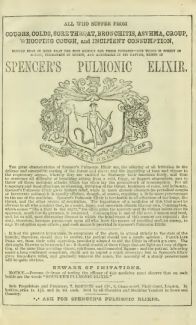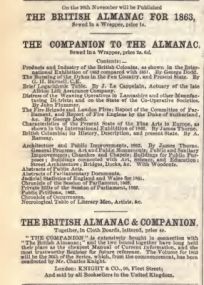nn
n
n
n
n
n There will always be a market for horoscopes as longnas there are also people willing to part with ready money for hens’ teeth,nmagic beans and rocking-horse droppings. Astrological almanacs, with theirnidiosyncratic advertisements for lucky amulets, liver pills and snake oil,ncontinue to sell in numbers in first half of the twenty-first century, whilstnthe corresponding sales of muskets, farthingales and indulgences have droppednthrough the floor.
n
n
n
 |
| Dr Herrick’s Sugar Coated Vegetable Liver Pills |
n
n
n
nThe main thrust of almanac-publishing began to distance itselfnfrom the prognostication business as early as 1644, when John Evelyn publishednhis Kalendarium Hortense, which gave sound advice to gardeners,nnurserymen and farmers regarding what to do, at what time of year, when tonplant and when to harvest, and which also contains the following sterlingnadvice,
n
n
n
n“…every man ought for his health’s sake … take a country walk of anmile, every morning before breakfast and, if possible, let it be upon your ownnground.”n
n
n
n
n
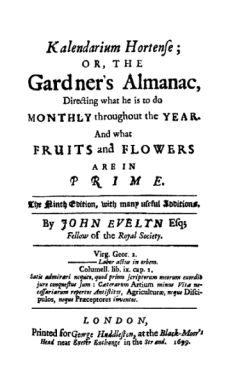 |
| John Evelyn – Kalendarium Hortense – 1699 [9th Ed] |
n
n
n
nIt is full of good, practical advice, and is just as relevant andnuseful today, particularly as we are looking more and more to older, organicnmethods of growing our foodstuffs, without chemicals and pesticides, and therenis a burgeoning trend in reviving the older strains and varieties of nativenplants. Evelyn includes the corresponding astrological symbol at the head ofneach month but that is where he stops any reference to the stars, unlike in hisnmedicinal Herball, which is packed with superstitious nonsense andnabsurd jiggery-pokery.
n
n
n
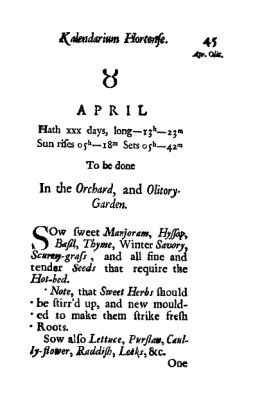 |
| Evelyn – April – Kalendarium Hortense |
n
n
n
nIn 1704, John Tipper, a Coventry schoolmaster, began hisnLadies’ Diary, an almanac that omitted any reference to quackery butnpromoted the study of mathematics, logic and rationality in ‘the fairer sex’,ntogether with recipes, biographies of celebrated woman and other articles aimednat a female audience. The Ladies’ Diary was very successful, so much sonthat a parallel but independent publication, the Gentlemen’s Diary, wasnlaunched in 1741, and the two ran separately until their amalgamation in 1841.nMany of the mathematical and logic problems from the Ladies’ Diary,ncalled Enigmas, were collected and published in separate volumes, ThenDiarian Miscellany, from 1775.
n
n
n
 |
| C Hutton – Diarian Miscellany – 1775 |
n
n
n
nThe astronomical information that began asnaids to horoscope-drawers was recognised to be of value to mariners, navigatorsnand the military, and naval almanacs and ephemerides, with tide tables,nnavigation guides and other related topics became an increasingly invaluablenresource for, amongst other bodies, the Royal Navy.
n
n
n
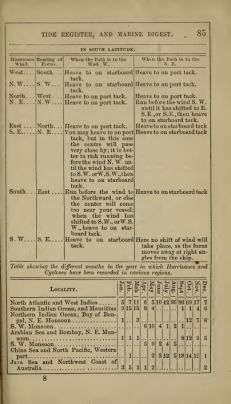 |
| Tennent’s Register and Marine Digest – 1877 |
n
n
n
nA challenge to the vestedninterests of the Stationers’ Company came in 1755, when Thomas Carnan issued annalmanac without their authority and was, predictably, dragged before the Courtnof Common Pleas for his temerity where, undoubtedly to the surprise of bothnsides, Carnan’s action was upheld and the legal monopoly was broken.
n
n
n
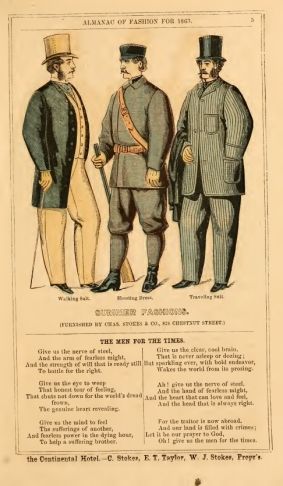 |
| The Almanac of Fashion – 1873 |
n
n
n
nFour yearsnlater, Lord North’s attempt to re-institute the monopoly with a parliamentarynBill was defeated by a 45-vote majority, although the Company retained theirninfluence over the book market through the 15d stamp duty payable on anynalmanac sold (selling an unstamped almanac carried a prison sentence of notnmore than three months, and a 20 shilling reward was paid to anyonenapprehending the vendor of an unstamped almanac).
n
n
n
 |
| John Partridge – Merlinus Liberatus – 1842 |
n
n
n
nThis duty was repealed inn1834, and the trade in almanacs flourished thereafter. However, if anything cannbe said to have driven a palpable nail into the coffin of the frivolousnalmanacs, it arrived a few years earlier in the form of the British Almanac.
n
n
n
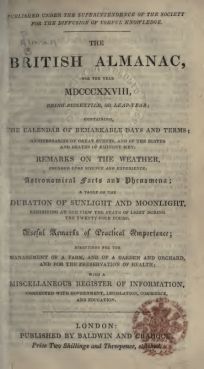 |
| The British Almanac – 1828 |
n
n
n
nPublished by the splendidly named Society for the Diffusion of UsefulnKnowledge (more of whom at a later date), the British Almanac was firstnpublished in 1828, and in the Preliminary Observations of the first issue, thencompilers specifically single out Partridge and Moore by name as those guiltynof disseminating spurious nonsense. They point out the ridiculous situation ofnlong-term weather forecasting.
n
n
n
n“These works profess, in the plainest terms,nto foretel [sic] the weather, even to a day; stating that on one daynthere will be rain, on another snow, and on a third thunder.”n
n
n
n
n
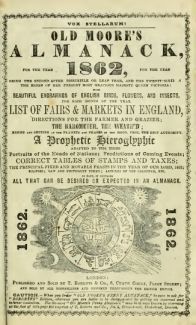 |
| Old Moore’s Almanack – 1862 |
n
n
n
nSimilarly,nthey criticise the broad, vague predictions on the political scene, of the ‘expectnbad news from Scotland’ sort, the use of divisive language as might lead tondifferent religious sects into conflict, the ‘utterly obscene’ articlesnin these almanacs so offensive that they “… could never be admitted into anyndecent house,” and, of course, “… the absurdities of their astrology.”
n
n
n
 |
| Table of Term Time Starts and Finishes for Oxford and Cambridge |
n
n
n
nInstead, the British Almanac concentrated on facts, to the extent that even thenmost uncompromising Gradgrind could not find fault, with comprehensive lists ofnterm times, public holidays, tide tables, astronomical phenomena, chronologicalntables of notable events, the latitudes and longitudes of the principal foreignncities, postage duties, gardening tips and hints, and a review of the principalntechnological innovations of the previous twelve months.
n
n
n
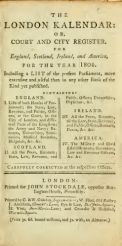 |
| The London Kalendar – 1804 |
n
n
n
nThe Gentleman’snMagazine welcomed the change of direction, and celebrated that the
n
n
n
n“…nday of the old almanacks was gone; their sun was set; ‘useful knowledge’ beatn‘useless ignorance’ out of the field.”n
n
n
nThe British Almanac continuednto be published until 1897, and set the standard for other ‘serious’ almanacs,nof which Whitaker’s (founded in 1868) is perhaps the most famous andnpopular example still produced today.
nnn
n
n
nnn
n
